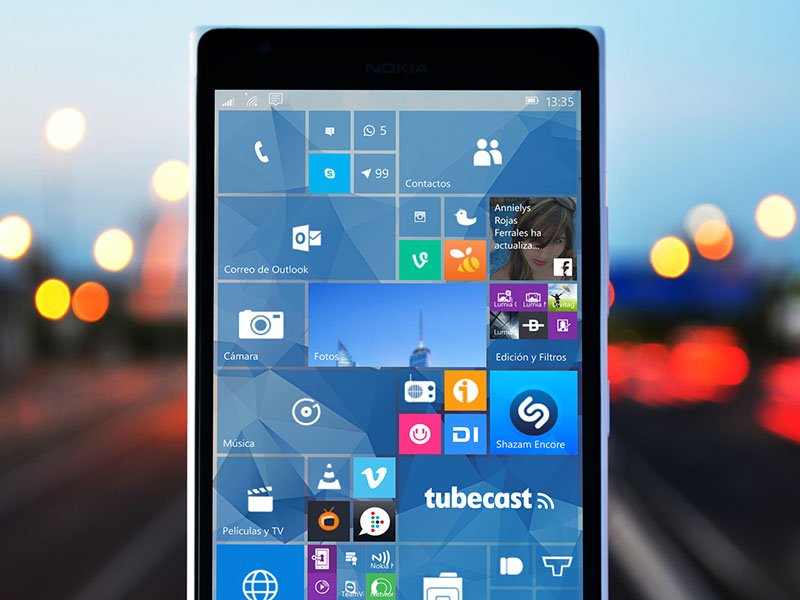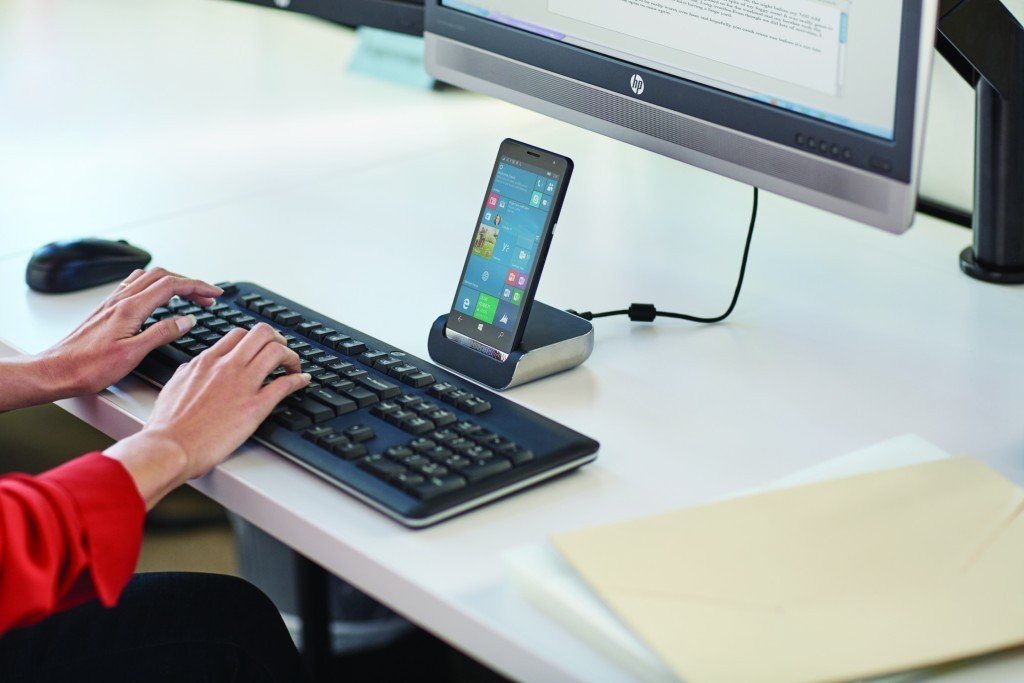Is Microsoft strangling Windows phone to prepare for the concept of Surface 'phone'?
Many may have read the title as "Is Microsoft killing Windows phone?", concluded that the answer is, "yes" and jumped to the comments to express their anger, snark or dismay. But that wasn't the question.

The question: "is Microsoft strangling Windows phone to prepare for the concept of a Surface phone?" That's an inherently very different question. I understand the well-rehearsed idea that Microsoft is killing Windows phone. The company's dismal performance in mobile, it's apparent apathy to marketing a first-party smartphone and it's painful silence on the matter could all be legitimately interpreted as conclusive evidence that Microsoft is indeed killing its mobile strategy.
For many Microsoft watchers, the company's collective failures in mobile from Pocket PC, Windows Mobile, Windows Phone and culminating with Windows 10 Mobile, are evidence that Microsoft has finally given up on the idea of Windows-on-mobile. I disagree.
I do, however, believe that to ensure the survival of Windows-on-mobile Microsoft has made difficult decisions that are painful for Windows-based phone loyalists, both inside and outside of Redmond, to endure. It seems Microsoft has deemed that the survival of Windows-on-mobile requires the pruning of the withering branches that are Windows phones.
The Windows-on-mobile vision lives on
To ensure the health of a tree, diseased branches are removed to prevent the disease from spreading to the rest of the tree. This pruning ultimately strengthens the roots, and if it's a fruit-bearing tree, it encourages the eventual production of fruit.

Contrary to exaggerated claims, the current state of Windows phone isn't that of a dead platform. I understand some who make the "claim" intentionally use hyperbole to express its dire condition. Windows Phone 8.1's no longer supported and Windows 10 Mobile's on just 20 percent of devices. Still, Microsoft provides limited support via OS updates. Sporadic developer support, real but insufficient OEM support from the likes of HP and Alcatel, and a passionate though diminishing fan base are also present. Together these variables suggest Windows phone is still alive, but like a branch in need of pruning, it is diseased.
Due to rejection by consumers, insufficient developer support, inconsistent commitment from Microsoft and an inescapable negative reputation, Windows phone is likely unsalvageable. Microsoft knows this. To be clear; I'm referring to a smartphone running Windows 10 Mobile, nothing more.
Every smartphone is a mobile device, but every mobile device is not a smartphone.
The idea of Windows on a smartphone is perceived by most as a "diseased concept" that I believe would be rejected no matter how Microsoft might present it. The iPhone and Android phones have defined what a smartphone is and sadly, due to external forces and missteps by Microsoft, a smartphone running any version of Windows does not fit that definition.
Get the Windows Central Newsletter
All the latest news, reviews, and guides for Windows and Xbox diehards.
Still, though every smartphone is a mobile device, every mobile device is not a smartphone. It is upon this truth that I believe Microsoft is resting its mobile strategy. But to move forward with its Windows-on-mobile vision, it must first remove the diseased Windows smartphones from the market and the idea of Windows on a smartphone from public consciousness.
Smartphone woes

Microsoft's vision of bringing the power of Windows to a pocketable device is decades-old. Long before iPhone or Android phones, Microsoft's mobile OS was a player in the enterprise smartphone space.
To Microsoft's dismay, the historically ignored consumer demographic passionately embraced Apple's offering and Android smartphones that followed. Microsoft's response after its iPhone-inspired awakening from years of lethargy was wracked with desperation.
Microsoft's Live Tile-based, touch-friendly Windows Phone 7 UI was a new and unique manifestation but still a continuation of its Windows-on-mobile vision. Windows Phone 8 and Windows 10 Mobile followed with many improvements and sacrifices. But as was the case with other smartphone iterations of Microsoft's Windows-on-mobile vision, they all ended in failure.
Every mobile device is not a smartphone
Microsoft is currently in a quandary with respect to bringing the next iteration of its mobile vision to market. I believe the company is planning a Continuum-enabled Windows on ARM ultramobile PC with the context-conforming CShell and telephony. This will be a mobile device, but it will not be a smartphone.

For it to be accepted by the market, any remnants of Microsoft's failed smartphone attempts must be eradicated from consumer's minds to whatever extent possible.
Additionally, I believe Microsoft has deemed physical reminders of that failed platform must be purged as well. Thus its full retreat from the market and little effort to solicit OEM support. This strangling of Windows phone while supporting its Widows-on-mobile vision puts Microsoft in a multi-faceted quandary.
Problems with pruning
Though the idea of Windows phone is quickly fading from consumer's collective consciousness, which Microsoft wants, it is also fading from developer's collective consciousness, which Microsoft doesn't want.

Due to low market share and other factors, developers never supported Windows phone in any meaningful way. Now, they're not only ignoring Windows phone as they've historically done but are accepting iOS and Android as the only platforms that matter. Still, Microsoft needs developer support for Windows 10 now and its Windows on ARM ultimate mobile device later.
Microsoft not supporting Windows phone isn't an abandonment of Windows-on-mobile.
Microsoft's public dance of dropping carefully curated assurances of a commitment to mobile in reference to a potential Surface 'phone' (ultimate mobile device) while intentionally choking Windows phone by withdrawing all but the most basic support sends a confusing message.
Like many bloggers, consumers and Microsoft watchers, developers mistakenly see Microsoft's lack of passionate support for the current iteration of Windows phone as Microsoft's abandonment of its Windows-on-mobile vision. Consequently, many are abandoning support for Windows and not looking back which is disastrous for Microsoft's mobile future regardless of what non-smartphone device it launches.
We're part of the problem

The other part of Microsoft's pruning process problem is you, and when I say you, I mean us. Passionate Windows phone fans who don't want Windows phone to die.
Now, this is where language becomes important, and a bit confusing. When most people say Windows phone is dead they mean the totality of Microsoft's mobile strategy or Windows-on-mobile (sometimes less accurately called Windows on 'phone' when referencing a future non-phone device).
They're not looking beyond the current iteration of Windows-on-mobile and are seeing Windows 10 Mobile as the totality of Microsoft's mobile strategy. This is wrong. Just as Pocket PC, Windows Mobile, and Windows Phone "died" but Windows-on-mobile lived on as subsequent iterations of the mobile OS, Windows 10 Mobile will likely do the same and be succeeded by Windows 10 on ARM with CShell.
As fans, however, we love, use, talk about and refuse to give up our Windows phones. Some of us still actively try to convert others (I gave that up over a year ago). Naturally, this passionate support and evangelizing of Windows phones work to counter Microsoft's process of pruning actual phones and the idea of Windows phones from the market and our collective consciousness. Microsoft doesn't want consumers thinking about the fiasco that has been Windows on smartphones when it introduces its ultimate (Windows) mobile device.
A new way of thinking
Microsoft's hardware goals are to introduce new categories of devices that help consumers work more efficiently and which conform to a user's context.

Microsoft's still unrealized mobile vision has been clearly communicated over the years. The company wants to offer a pocketable device that can make calls, be a PC via Continuum and as a result of OneCore benefit from the breadth of features available to Windows 10. Pen support via system-wide inking, mixed reality and more are examples of features this ultimate mobile device, that can potentially be all devices, may bring to the table.
Microsoft faces the challenge of proudly communicating that the range of benefits that this device will bring to the masses are features of Windows 10, while conveying that the device itself is not a phone. It's clear from previous reader's comments that that distinction will be difficult to communicate.
I'm certain that hardware design will be critical to helping to make the visual distinction as clear as possible. Unique and new ways of interaction may be another. Intentional market positioning in the PC space as an ultramobile PC and subsequent marketing as such may further distinguish this device from smartphones.

However Microsoft brings its ultimate mobile device to the table, it will do so in the wake of strangling the life out of Windows phones right before our watchful eyes. It's not pretty, but if the next phase of Windows-on-mobile is to have any chance at acceptance the world needs to forget about Windows on smartphones in order for the concept of an ultimate mobile device to take root.
Now Read
What is Microsoft's intelligent edge and how does it affect mobile?
Microsoft's Surface 'phone' should include AR glasses, a pen and exclusive apps
Microsoft must launch a Surface phone - and get it right the first time
Jason L Ward is a columnist at Windows Central. He provides unique big picture analysis of the complex world of Microsoft. Jason takes the small clues and gives you an insightful big picture perspective through storytelling that you won't find *anywhere* else. Seriously, this dude thinks outside the box. Follow him on Twitter at @JLTechWord. He's doing the "write" thing!

